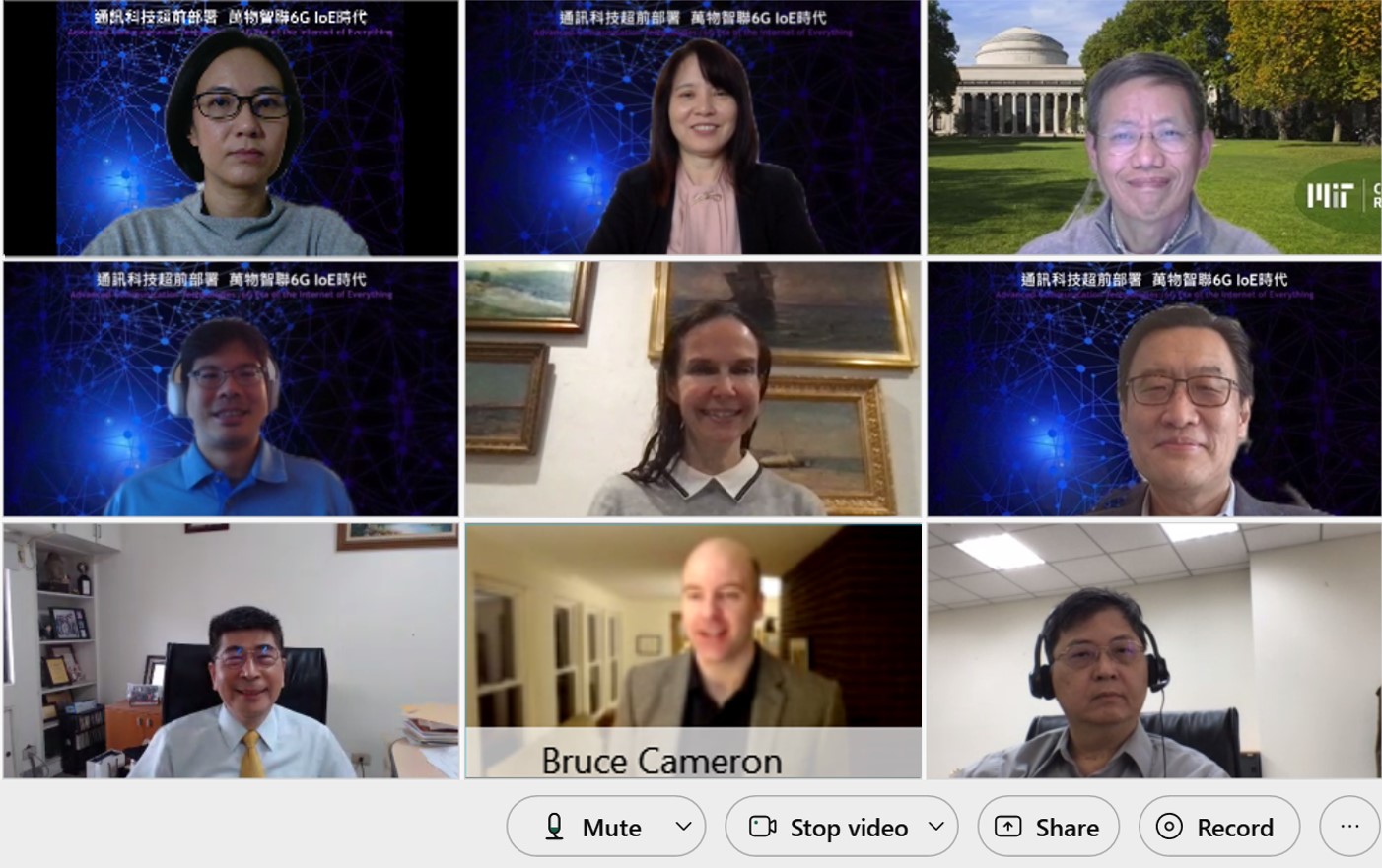The digital age is accelerating due to the COVID-19 epidemic, which leads to the surging demand for intelligent connectivity of all things. Advanced communication technologies play a key role in it. As soon as the 5th generation (5G) networks came into the market, many countries have dived into the field of the 6th generation (6G) network technologies. Low earth orbit satellites are regarded as the key technology that dominates 6G. It is expected that mobile communications will be integrated with low earth orbit satellite communications to achieve seamless access and coverage, and achieve the goal of the Internet of Everything. National Taiwan University and the Massachusetts Institute of Technology co-held an online workshop on November 17th on advanced 6G communication technologies. Professor Pai-Chi Li, VP of Office of Research and Development, and Director of Industry Liaison Office, National Taiwan University said in his welcome remarks: “The 6G era is expected to arrive in a few years. The combination of mobile communication systems and satellite networks will lead us to a highly automated and intelligent society. While countries are actively investing in 6G technology research and development, the Massachusetts Institute of Technology and National Taiwan University also play an important role in it.”

Photo: Group photo of NTU and MIT speakers
The workshop began with Dr. Muriel Médard, Cecil H. and Ida Green Professor from the Electrical Engineering and Computer Science Department of MIT. Dr. Médard pointed out that much of the recent debate on the adoption of 5G wireless technology has centered on the issue of standards. Her investigation showed that even the simplest of codes, such as those currently used for error checking, do as well as state-of-the-art codes. Since multi-code encoders are readily constructed, we may consider, freed from dedicated decoders, removing standardization, and the restrictions that come with it, in codes. Next, Dr. Bruce Cameron, Director of System Architecture Lab of MIT shared his thoughts on the future of satellite communications. He believed that satellite communications are undergoing many changes due to two key trends: changing services to smaller city-sized beams, and market entry of LEO constellations. He talked about the opportunities and challenges these new services present from an operator perspective, focused on the key of how to manage services dynamically. He also provided a brief overview of the market landscape in LEO.
In the second half of the workshop, Dr. Hung-Yu Wei, Professor and Associate Chair from the Department of Electrical Engineering of NTU, shared several of his observations based on years of research in professional fields including edge computing, fog computing, and machine learning. He also pointed out the challenges and opportunities that come with the development of 6G communication systems. Next, Dr. Hsi-Tseng Chou, Distinguished Professor from the Department of Electrical Engineering of NTU, applied his research of high-gain/smart antenna and the technologies of electromagnetic and communication systems in his talk on the antenna-in-package and modularizations for 5G, B5G, 6G and LEO satellite communications.
Given the attention that communication technologies are currently receiving, the four speeches in the workshop all attracted the participants’ enthusiastic engagement. The moderator, Dr. Tzong-Lin Wu, Professor and Associate Dean from the College of Electrical Engineering and Computer Science of NTU, concluded the workshop with the following remarks: “The Internet of Everything, which is expected to be achieved by 6G networks, is crucial to economic development. Many companies in Taiwan have actively invested in the research and manufacturing of related technologies and components. In today’s workshop, the talks from these experts have sparked many innovative ideas and potential opportunities. I believe that the combination of academic research and industrial applications will shed new light on the current challenges and accelerate the development of communication technologies.”